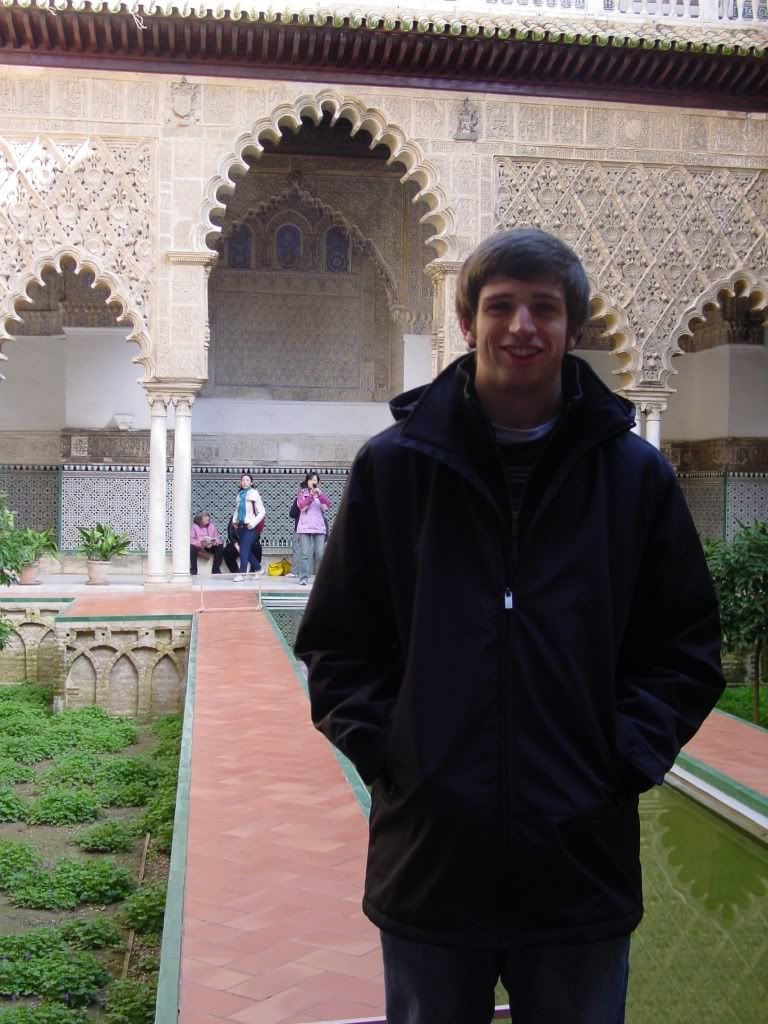
Alright y'all, time for the rest of the pictures and stories from Sevilla. One of the highlights of the trip was our visit to the city's Alcázar or royal palace. The palace was built in the Muslim style of architecture and is still the official royal residence in Sevilla, meaning that the king and queen of Spain stay there on their visits to the city. The Alcázar is a huge place with three different wings--it can't be very warm in the winter though because most of it is just open air--you can't really tell when you're inside and when you're outside. Its best feature, methinks, is its expansive gardens.
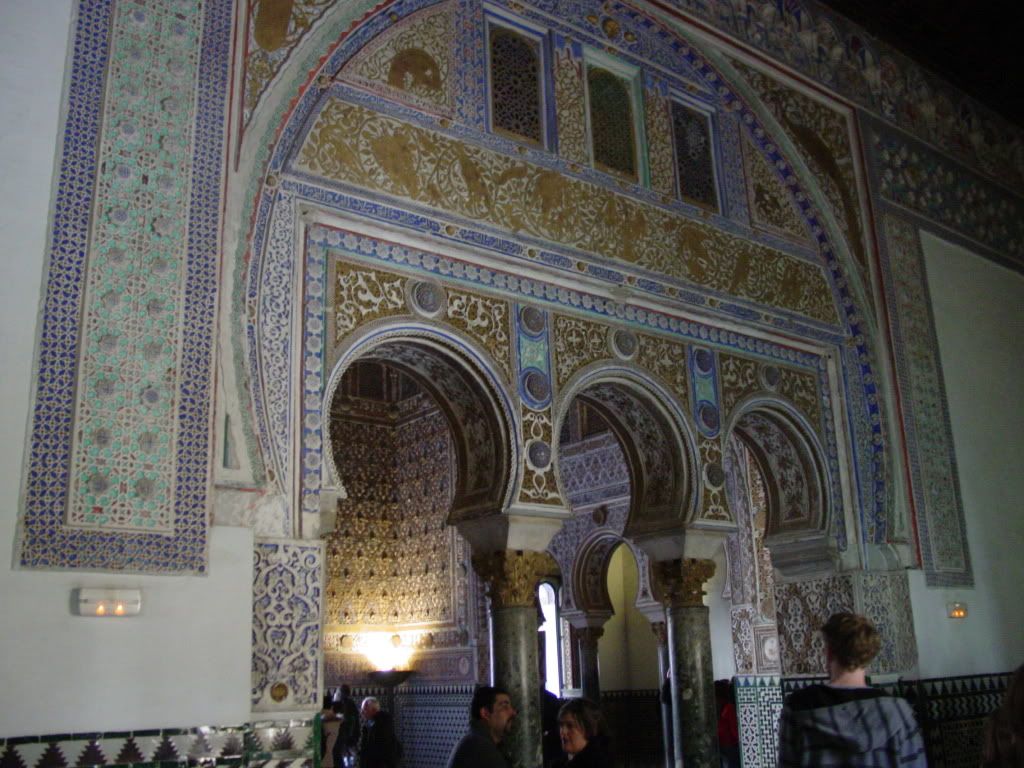
Inside of the Alcázar. Very cool Islamic architecture throughout. The south of Spain, including Sevilla, has a long history of Islamic influence because of its proximity to North Africa. It was the last very last region of Spain that the Christians re-took during the Reconquista.
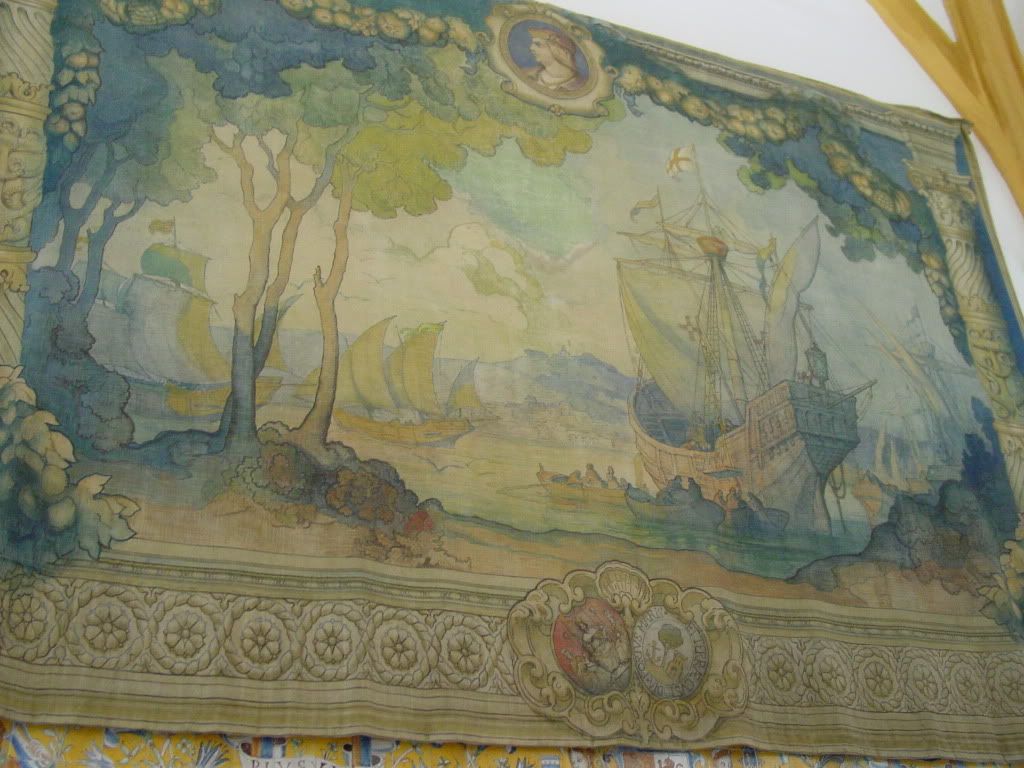
Huge tapestries on the walls. This is bigger than any one wall in my house.
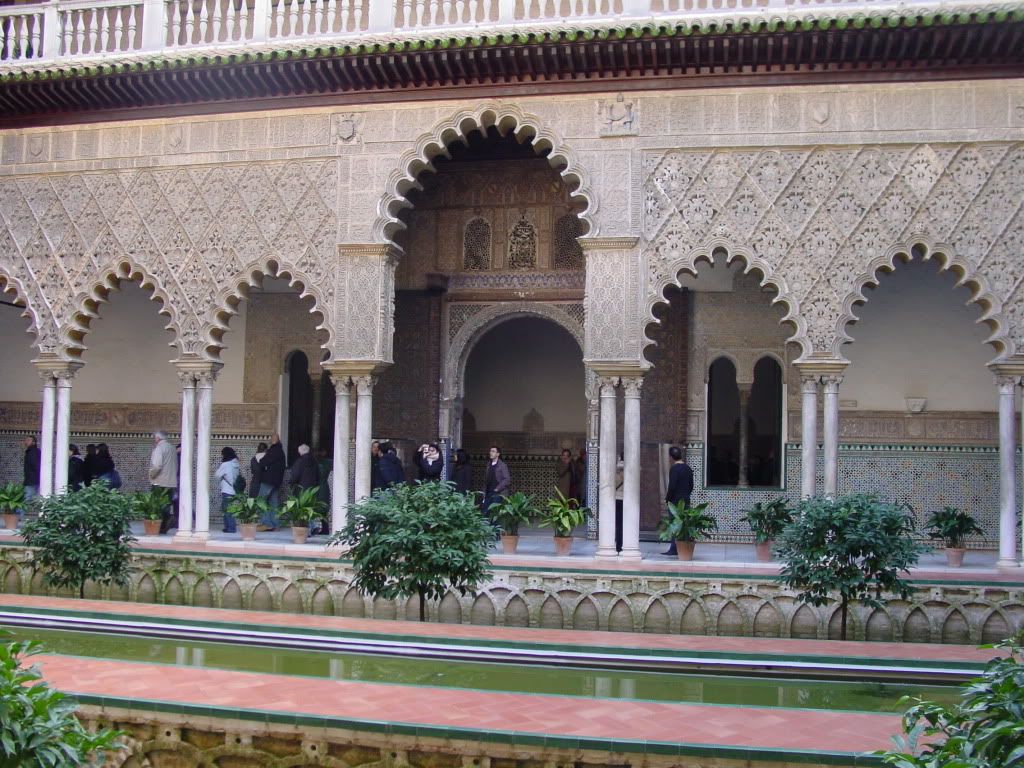
One of the inner courtyards.
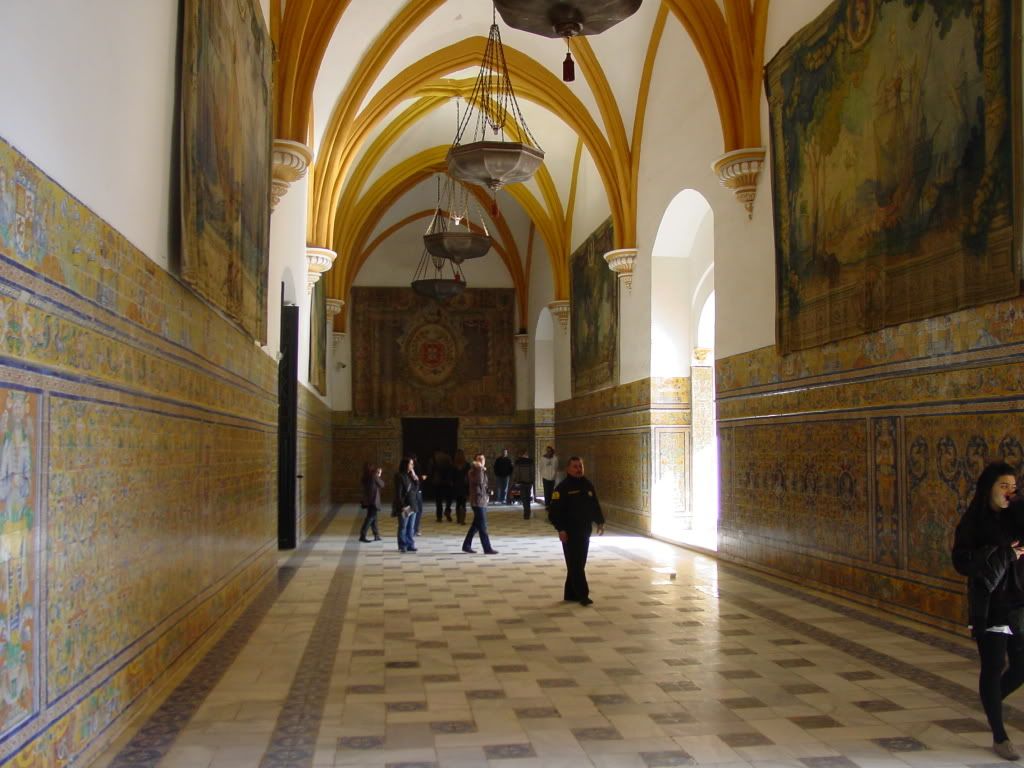
Halls of the Alcázar.
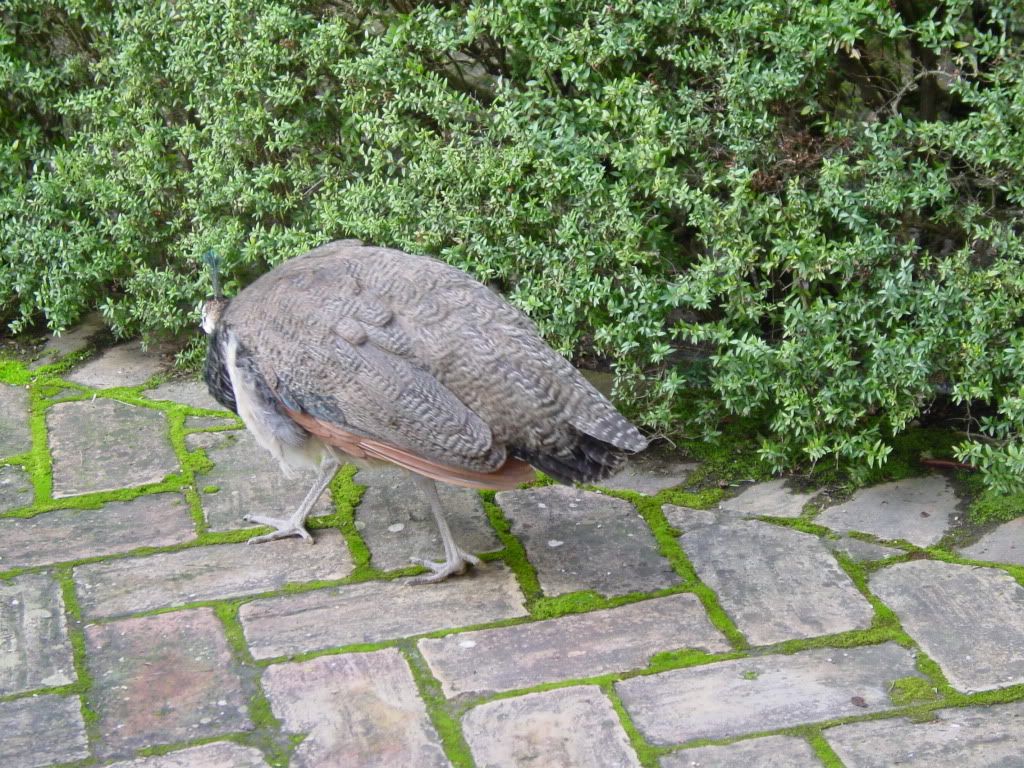
For all you Arcadians, they have peacocks halfway around the world. Just like the Arboretum!
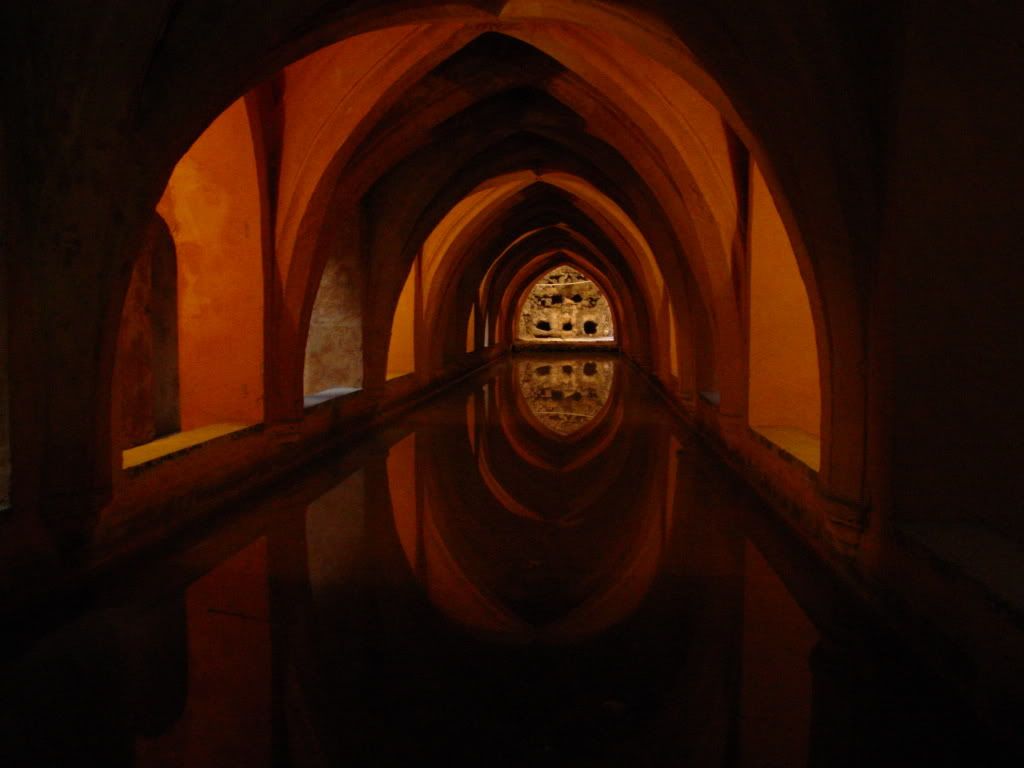
An underground bath. Very cool place to get ready in the morning!
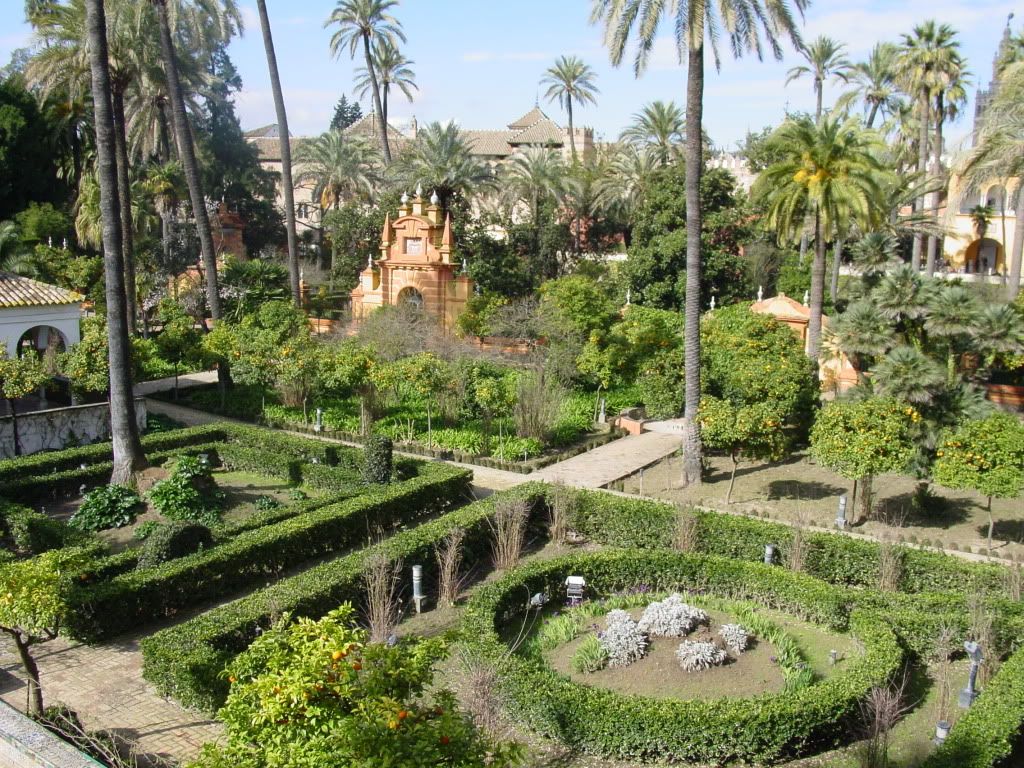
A view of the gardens. It was like having a huge park for a backyard.
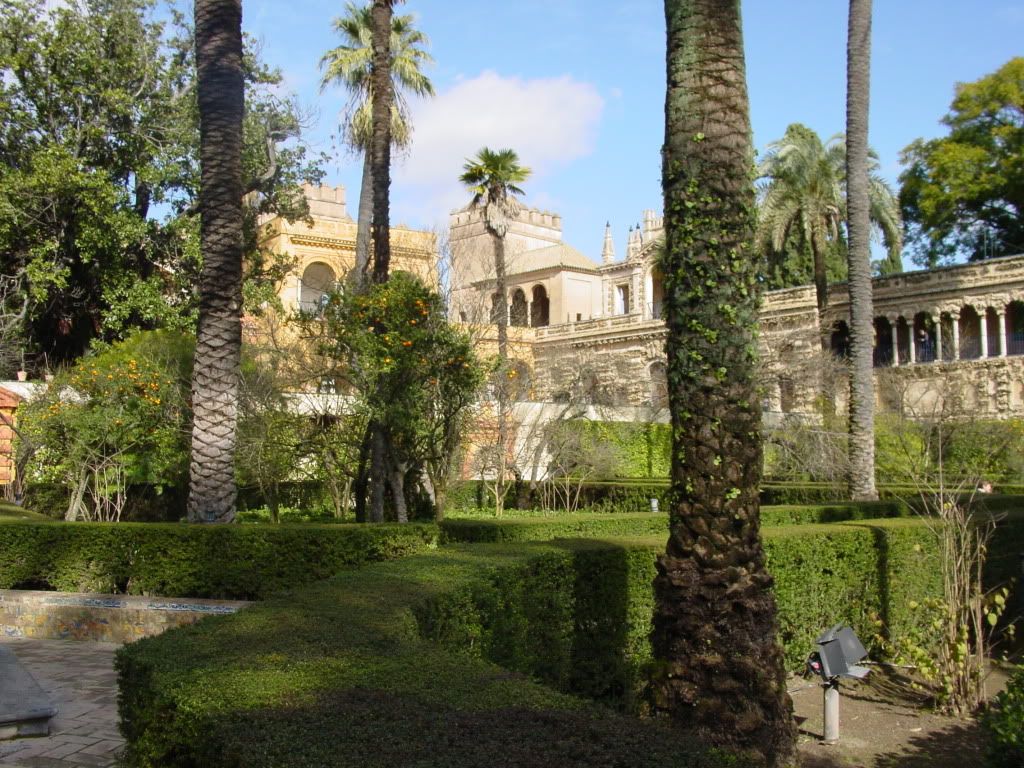
More gardens with the Alcázar in the background.

A labyrinth! Some of us played tag in here. So much fun...until I turned a corner too sharply and landed in a bush.
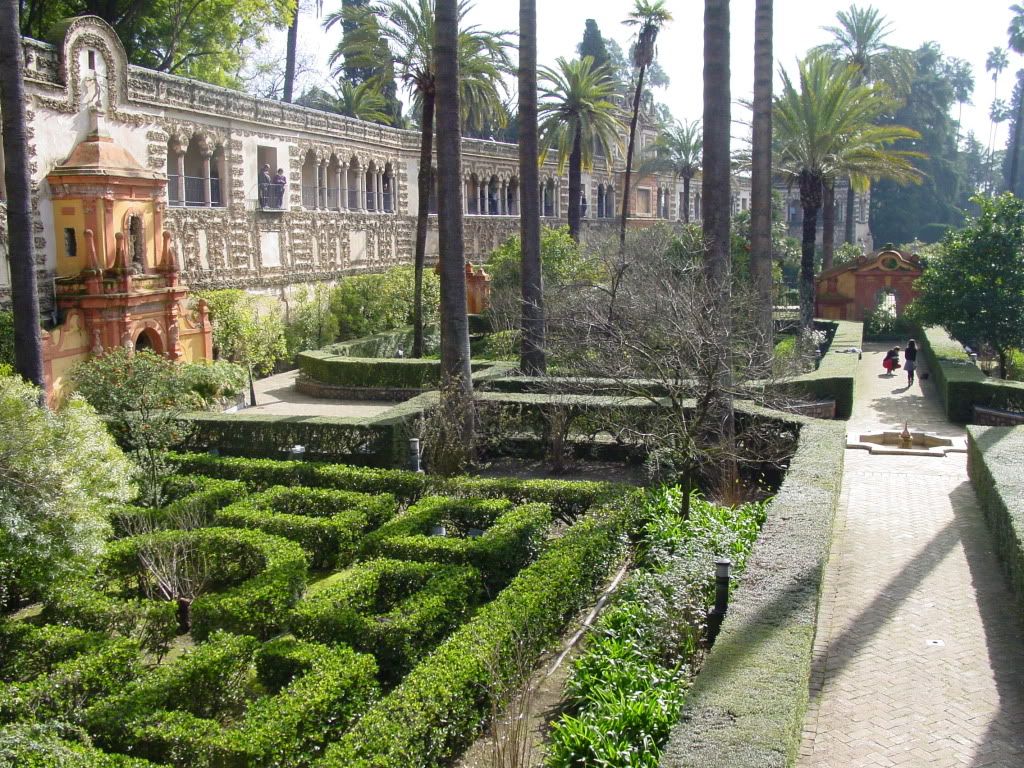
I'm sure you get it by now: cool gardens, eh?
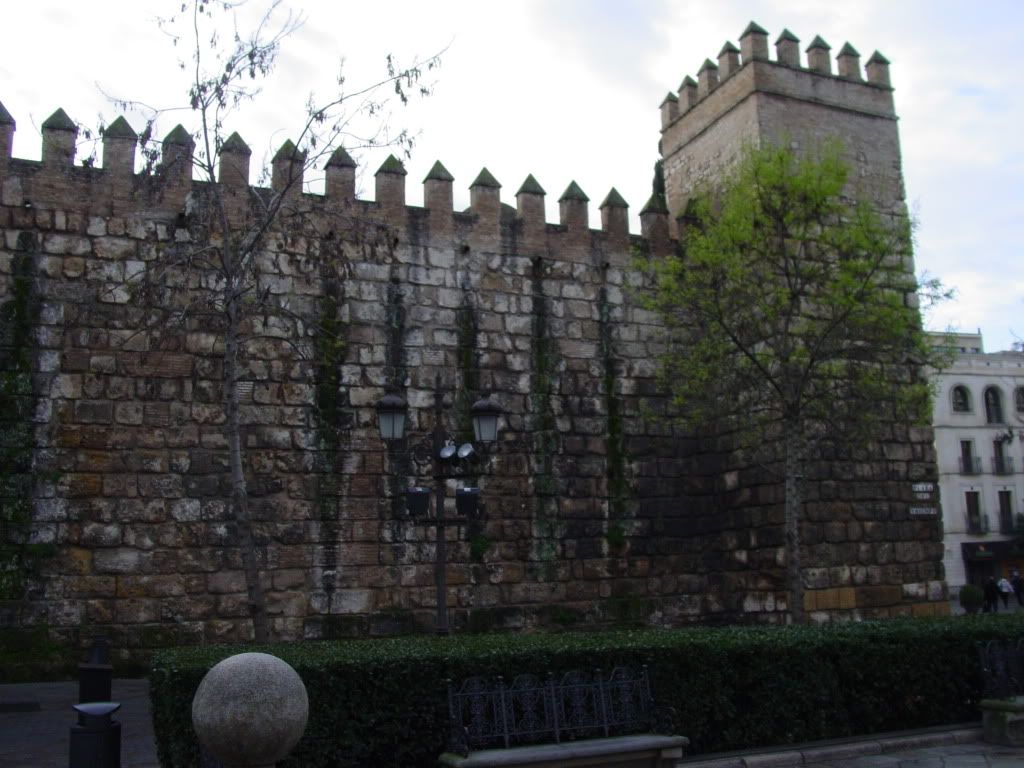
One of only two sections of the original city wall still standing.
Fast forwarding several hundred years, our next stop is Sevilla's Plaza de España. Apparently every major city in Spain has a Plaza de España but I think it's going to be hard to top this one. Featured in the movies Lawrence of Arabia and Star Wars, it was built in 1929 for the Ibero-American Exposition of 1929 (re-uniting Spain with all of its former colonies). The stock market crash of the same year kind of put a dent in the festivities but Sevilla was left with quite a few impressive gardens and buildings, the crown jewel being the Plaza de España. Now the site is used for government buildings (boring, eh?) but remains a popular tourist attraction. Take a look:
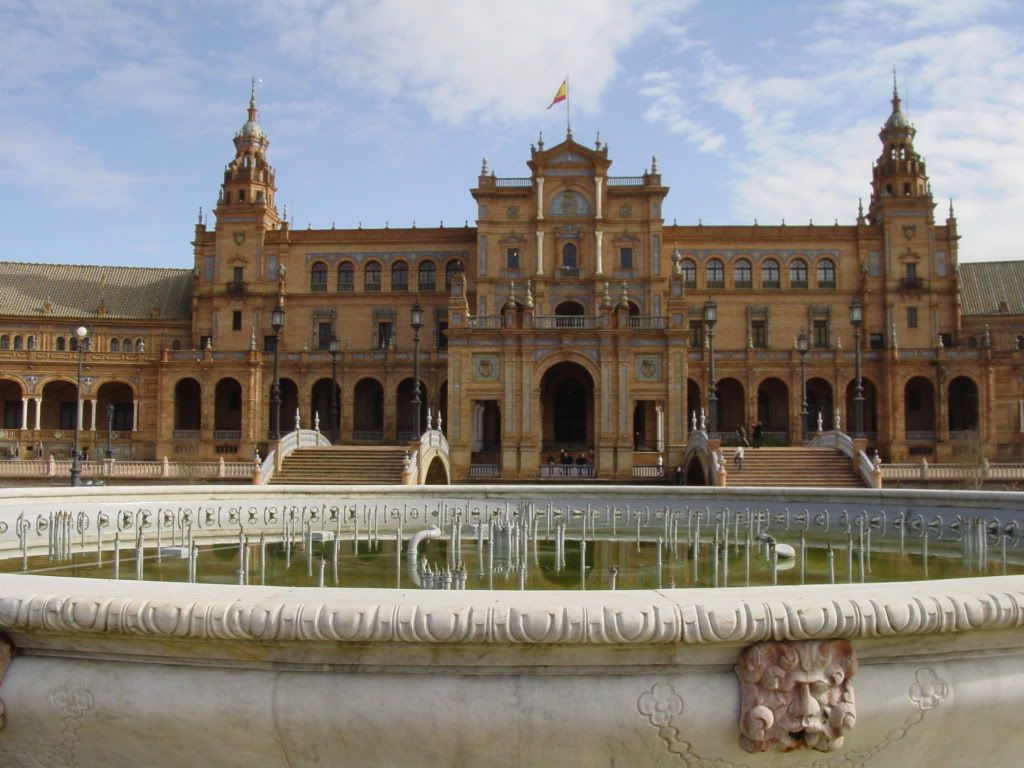
The fountain in the center of the plaza looking at the main building of the site.
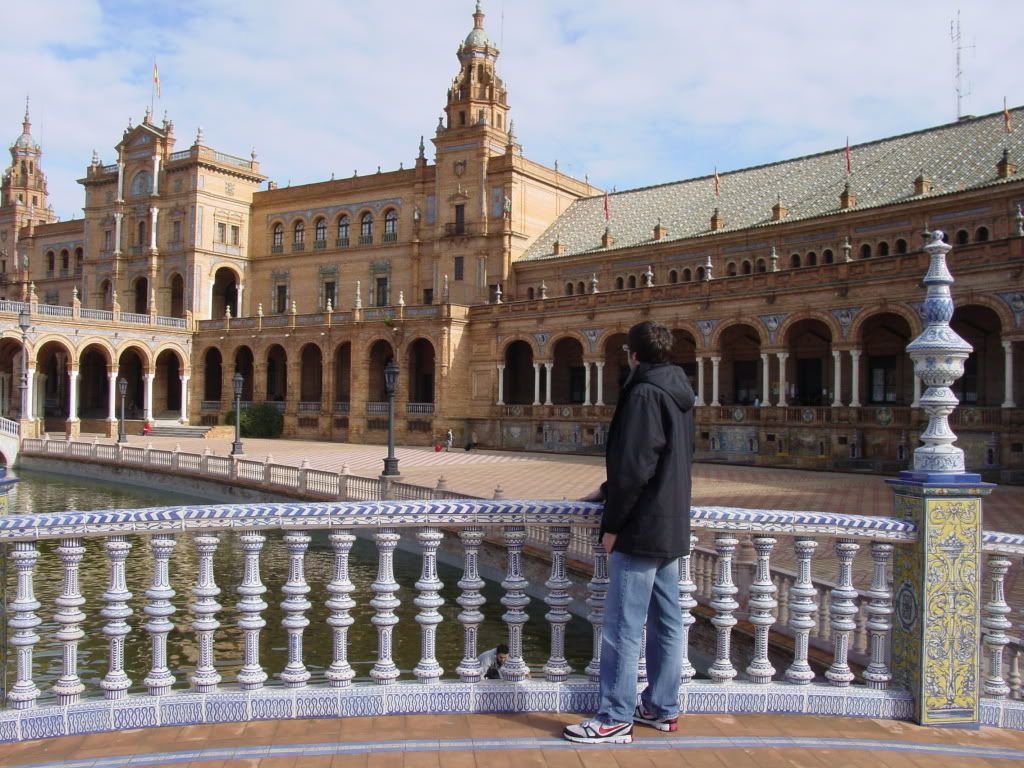
An attempt at being artsy. I call it "Contemplating Sevilla."
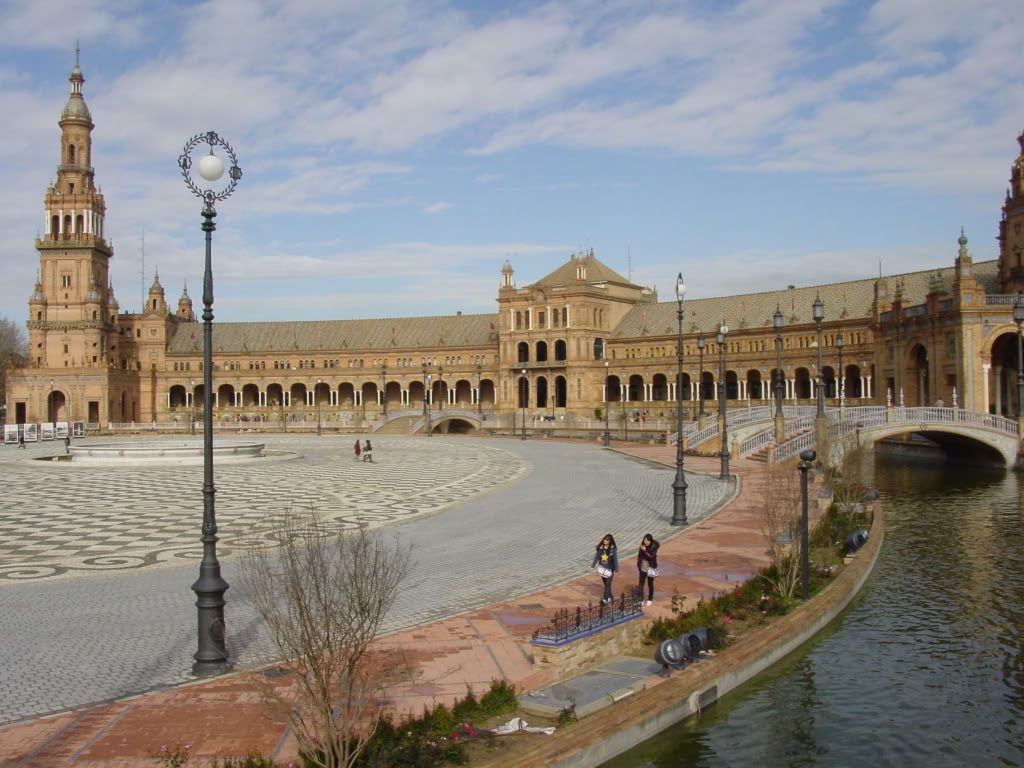
You can rent little boats and tootle around the little lake for a little amount of time.

One of the towers flanking either side of the plaza.
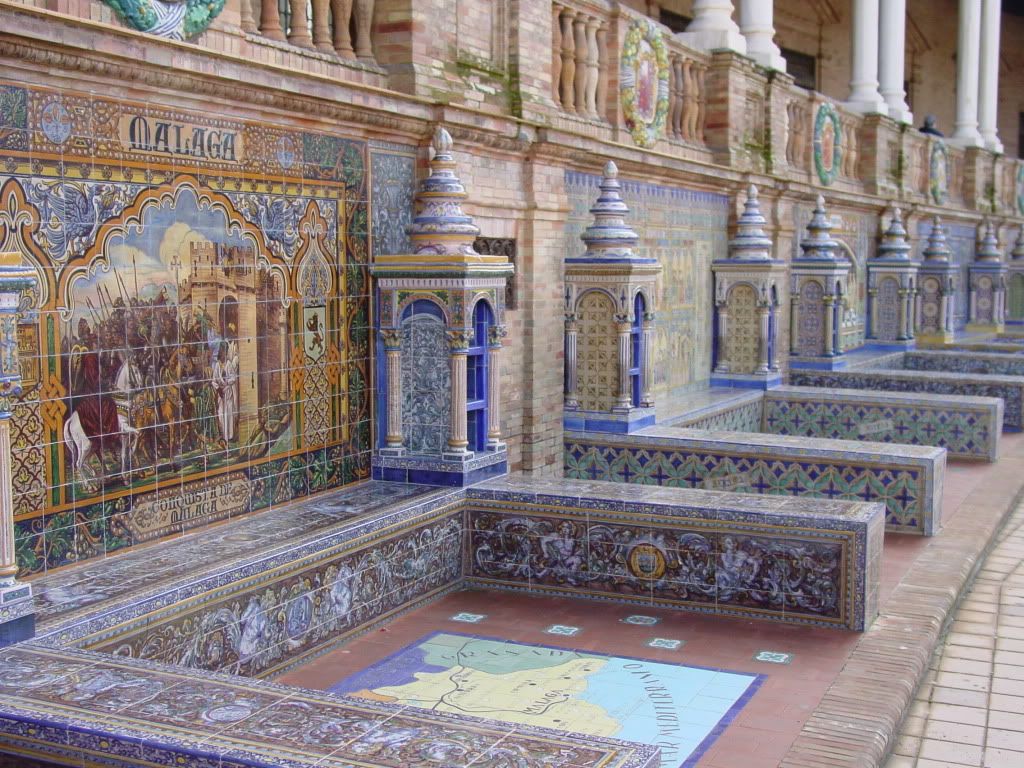
Each province in Spain gets a little area around the plaza with a painting of a map and the most important event in that province's history.

And, for you Star Wars fans, here's a picture of one of the scenes filmed at the Plaza de España.
If you know me, you know that I like sports a little bit. So, I took a walk to the the Estadio Ramón Sánchez Pizjuán, home to Sevilla FC, the city's biggest and most important soccer club. They haven't won the Spanish league since 1946 but they've been relatively successful over the past five years or so, winning the UEFA Cup (Europe's 2nd biggest club soccer competition) in 2006 and 2007 and the Copa Del Rey (Spain's Kings Cup) last season. Also, on the subject of soccer, today I bought my ticket for next week's friendly game between Spain (the reigning World Champions) and Colombia in Madrid. Couldn't be more stoked. Meanwhile, back at the ranch: Here's what I saw on my walk:
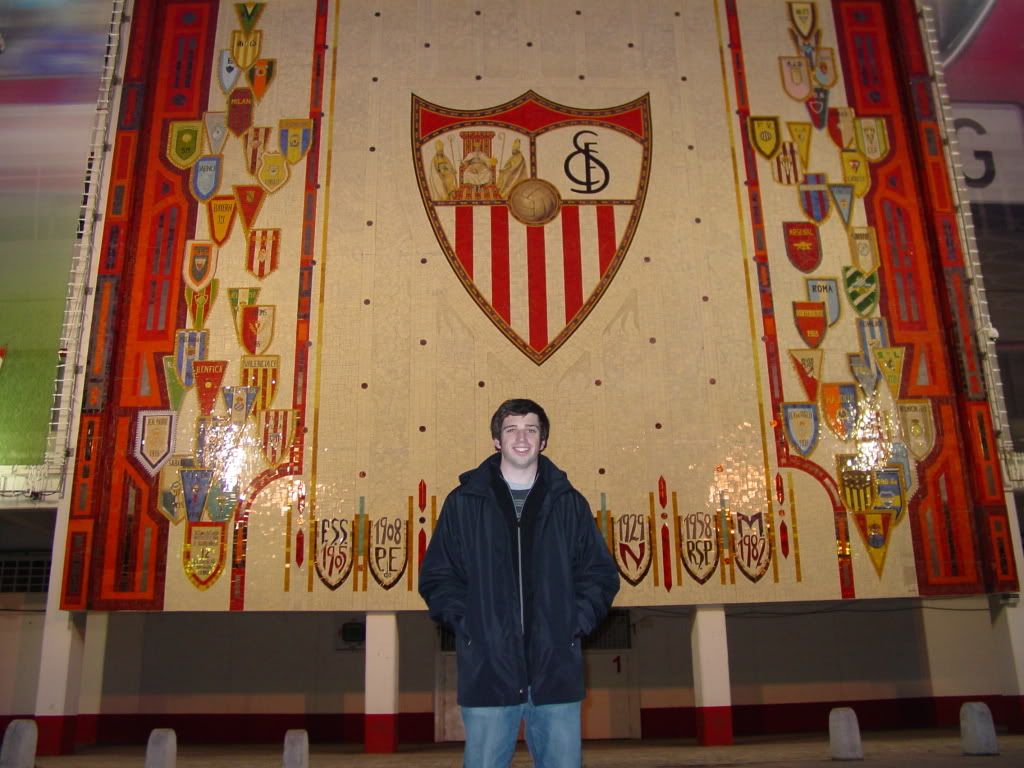
Spanish people are very nice. The guy I asked to take my picture got down on his knees so as to get the best angle. We could learning something about being helpful to strangers in the U.S. from these people.

My favorite kind of shopping: just looking. I always prefer to take pictures of the stuff rather than actually having to pay for it.

Antonio Puerta was a player for Sevilla who died on the field in 2007 after suffering a heart attack during the game. Translated, the writing means "Antonio Puerta is forever here."
I also made it to the Plaza de Toros, Sevilla's bullfighting ring. They really love it down there--the season starts up again in March/April.
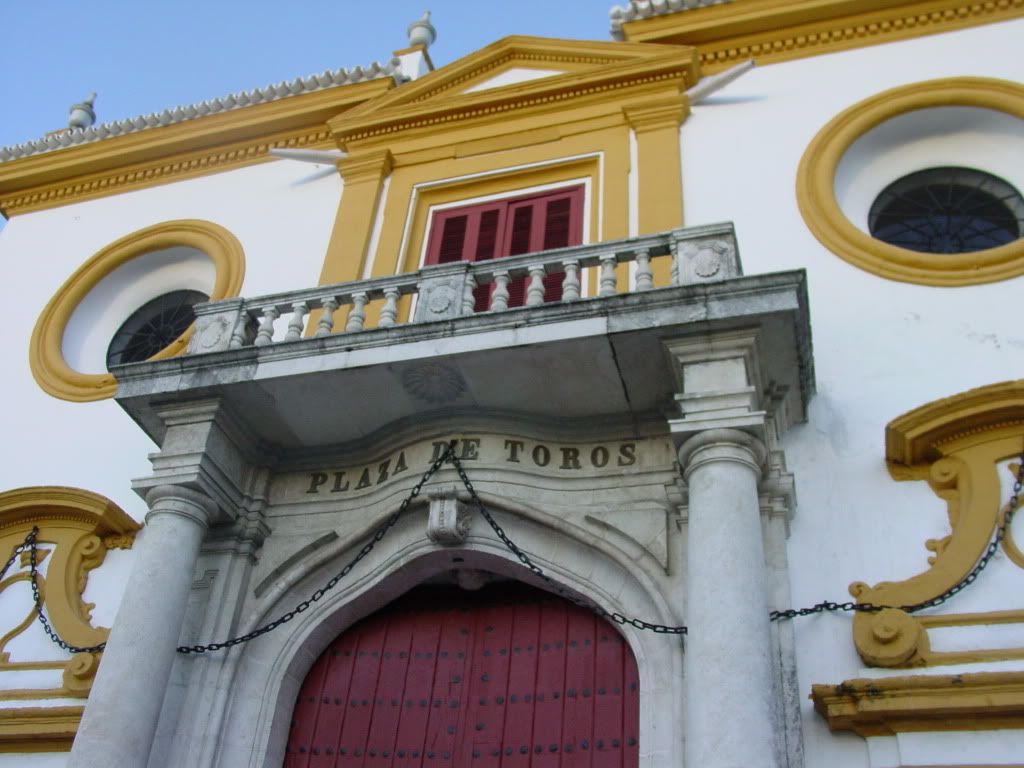
Outside of the Plaza de Toros.
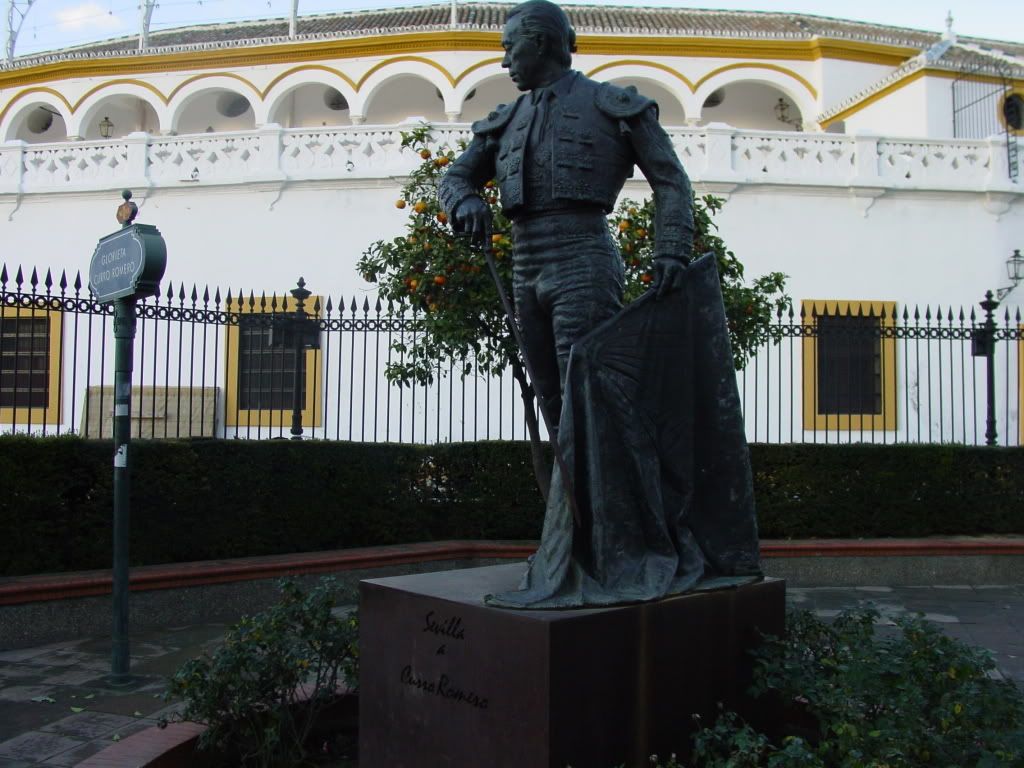
A statue of a famous bullfighter in Sevilla. The story goes that after suffering several injuries, this bullfighter was told by a doctor one day that he could no longer compete in his sport. Unable to cope with a life devoid of bullfighting, he killed himself that night.
Final news and notes from Sevilla:
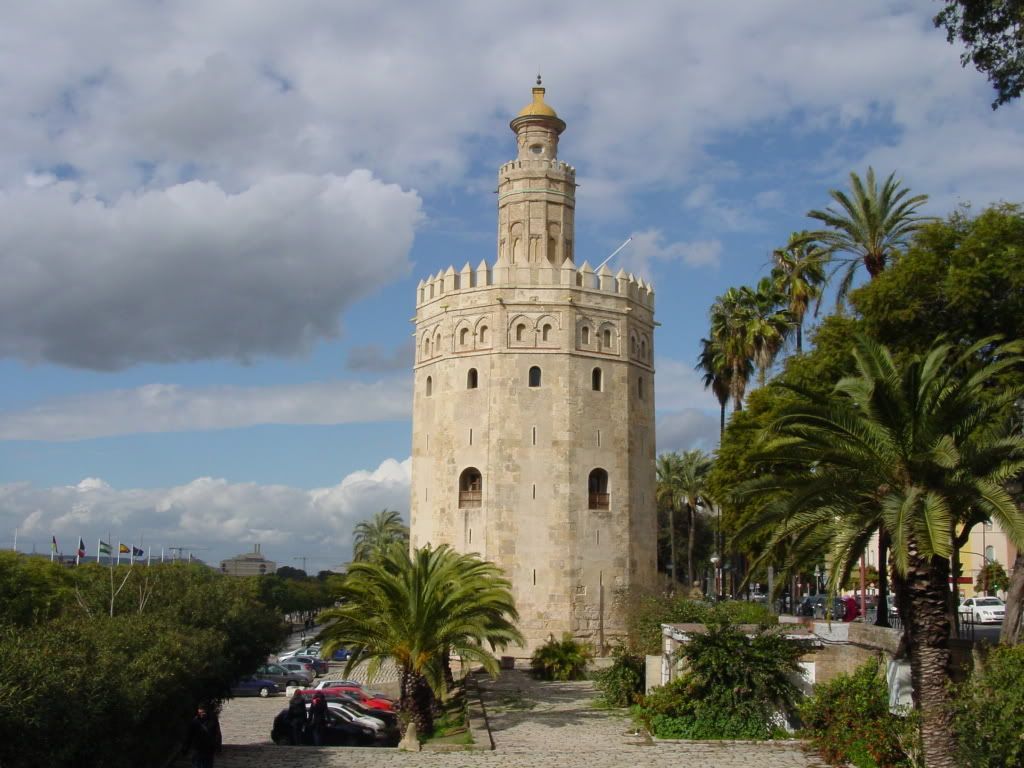
The Torre del Oro, or Tower of Gold. This used to be a military watchtower as many battles were waged over Sevilla, an important port city.
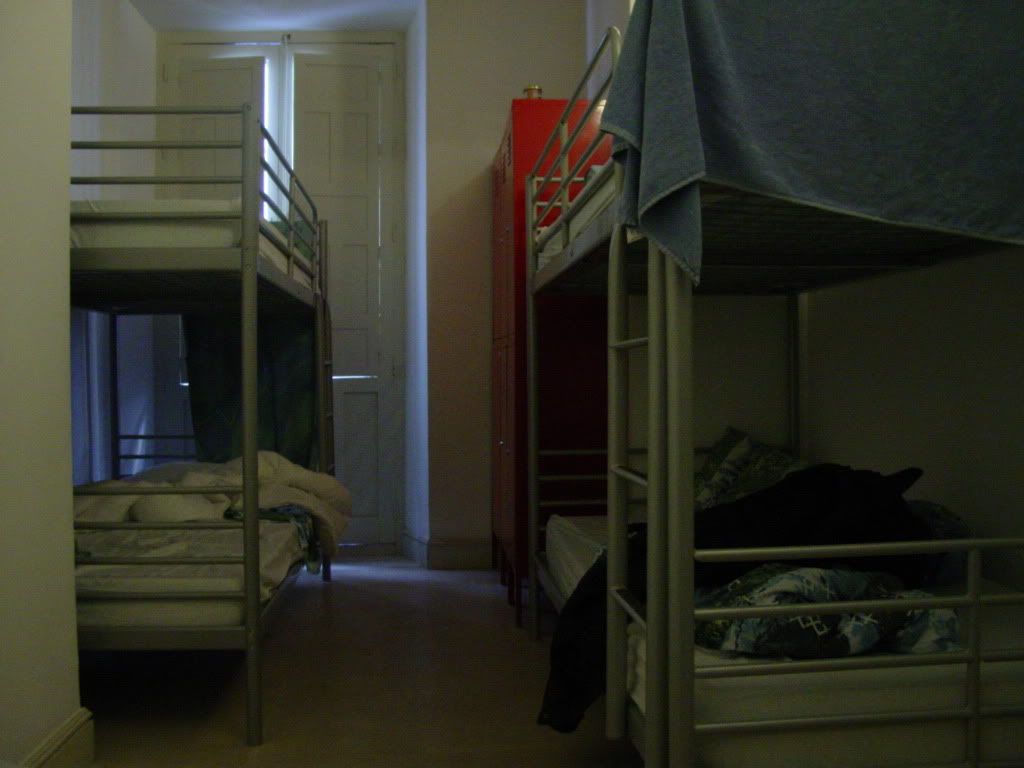
My room in the hostel. A very good first hostel experience--a little different sleeping in a room with five strangers but at least no one snored.
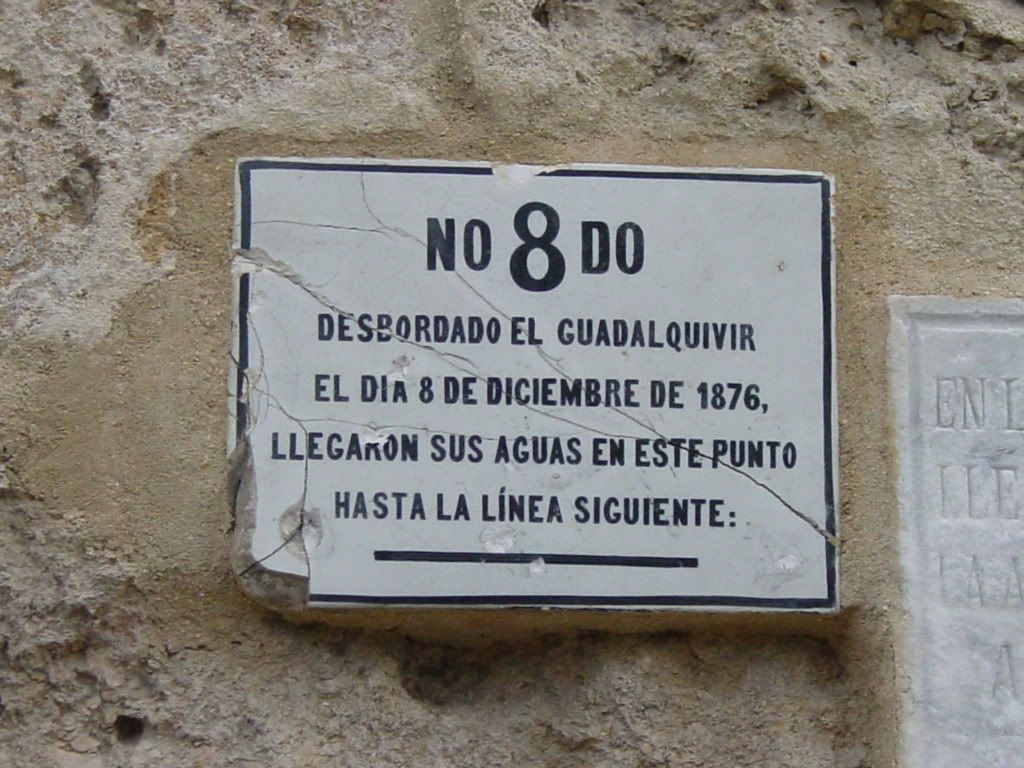
This inscription can be seen all over Sevilla. The symbol in the middle is not an 8 but rather the Spanish symbol for infinity. When read, it says "No madeja do" which sounds very similar to "No me ha dejado" which means "She has not abandoned me." Story goes, the king of Spain didn't like his son so he tried to name his grandson as his successor. The rest of Spain rallied behind the grandson, forcing the son, Alfonso X, to flee to Sevilla, the only city in Spain that would grant him safety. The people of Seville then developed this motto, pointing to the fact that they were the only ones to never abandon the true heir to the Spanish throne. They've kept it around as a sort of testament to their city's rich history.
And while Sevilla may never leave you, I had to leave her. That's all for now. I'll be staying in Madrid this weekend and exploring so hopefully I will have lots of things to share in the coming days! Until later, hasta luego.
Amazing pictures. Can't wait until we come over. Great blog. You have quite a following here in the U.S. Mom tells everyone about this. xoxo
ReplyDelete